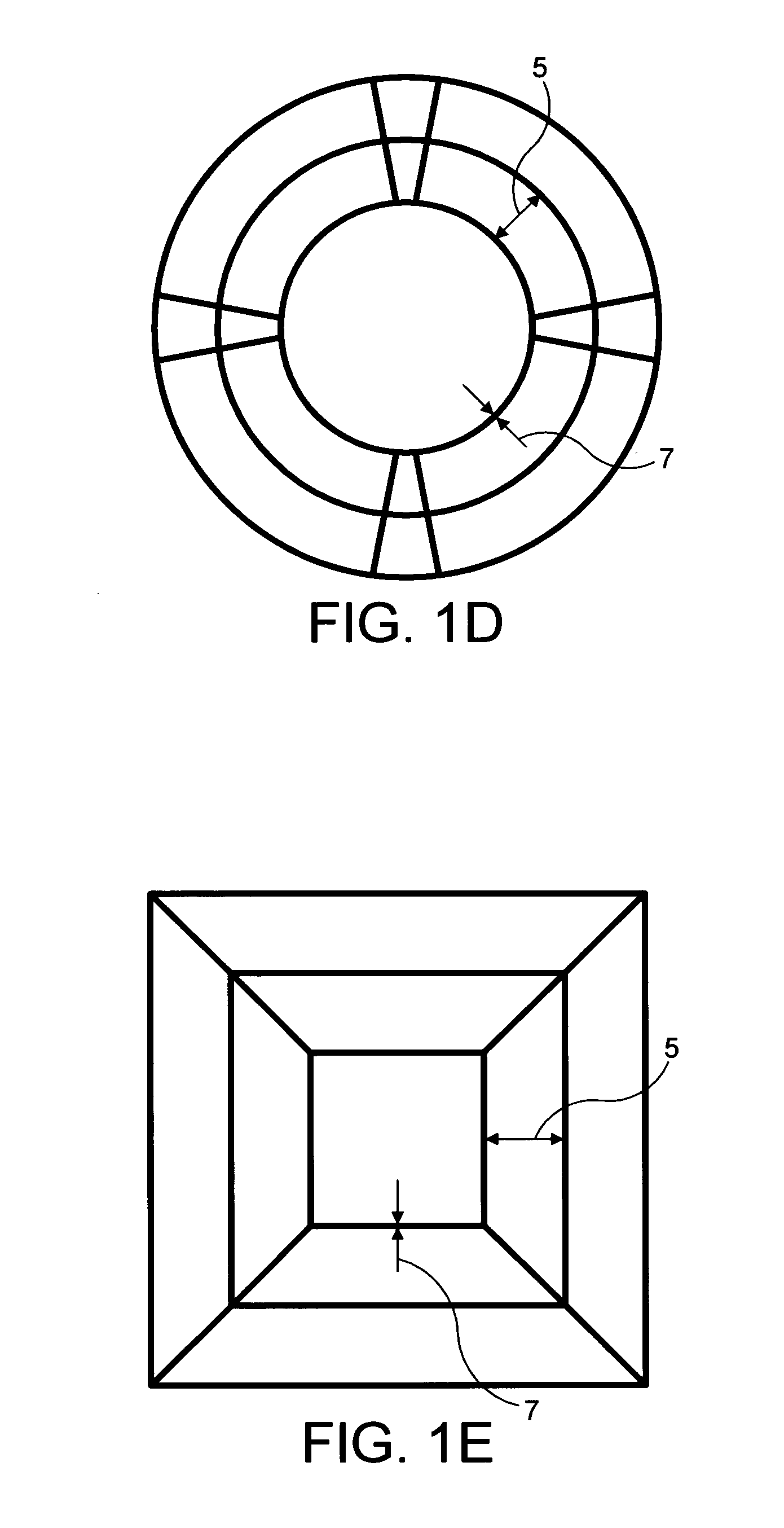Hollow-core photonic crystal fibre
a photonic crystal fibre and hollow core technology, applied in the direction of paper/cardboard containers, lamination, containers, etc., can solve the problems of small pitch required, difficult to accurately control small pitch, and hcpcfs of small pitch triangular lattices
- Summary
- Abstract
- Description
- Claims
- Application Information
AI Technical Summary
Benefits of technology
Problems solved by technology
Method used
Image
Examples
Embodiment Construction
[0030]In overview, a first disclosed fibre is a HCPCF with a transverse structure with a pitch at least five times larger than the wavelength of operation. HCPCF may also be known as band-gap fibre, air-guiding band-gap fibre, or microstructure fibre. The term HCPCF as used herein is understood to cover all such alternative terminologies, which will be familiar to the skilled reader. The HCPCF has a hollow core 1 (see also FIG. 3) surrounded by a cladding 2 of silica microcapillaries 3. By ‘transverse’ it is meant the direction perpendicular to the waveguide direction. The waveguide direction is the direction of the length of the holes 6 in the capillaries 3. As shown in FIG. 1, the pitch of a fibre is the distance 5 between centres of the holes 6 in the capillaries 3.
[0031]The example cladding structure shown in FIG. 1B is a kagome structure with a Star of David arrangement, where in the main body of the cladding 2, the microcapillaries 3 have an approximately hexagonal perimeter, ...
PUM
| Property | Measurement | Unit |
|---|---|---|
| infra-red (IR) wavelength | aaaaa | aaaaa |
| infra-red (IR) wavelength | aaaaa | aaaaa |
| infra-red (IR) wavelength | aaaaa | aaaaa |
Abstract
Description
Claims
Application Information
 Login to View More
Login to View More - R&D
- Intellectual Property
- Life Sciences
- Materials
- Tech Scout
- Unparalleled Data Quality
- Higher Quality Content
- 60% Fewer Hallucinations
Browse by: Latest US Patents, China's latest patents, Technical Efficacy Thesaurus, Application Domain, Technology Topic, Popular Technical Reports.
© 2025 PatSnap. All rights reserved.Legal|Privacy policy|Modern Slavery Act Transparency Statement|Sitemap|About US| Contact US: help@patsnap.com



